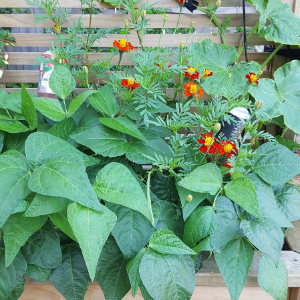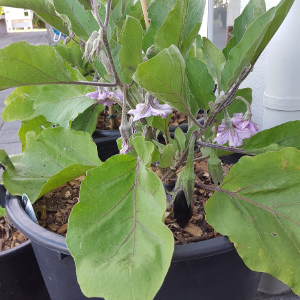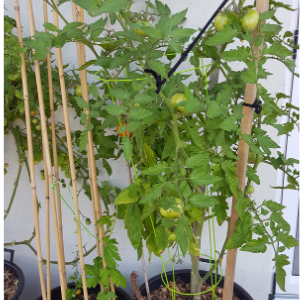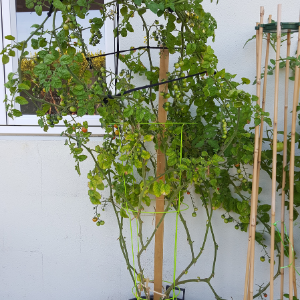Just wanted to put it out there that you don’t need a large section to be able to grow some of your produce. Depending on the size of your family and what you like to eat, you can have a very productive garden in a limited space. All you need is an interest and a will to grow.
I have significant garden space but like all gardeners, I too want to maximize space. I have set up container gardening on my patio and it is so nice to be able to literally see my vegetables grow in front of my eyes.
I have eggplants, grafted tomatoes, bush beans and cucumbers amongst other stuff. I also have a fig tree, a dwarf peach tree and a blueberry bush in containers. With all container gardening, you must water every day and if in a terracotta pot, perhaps twice a day. When filling your container, use good quality potting mix with a slow release organic fertilizer and water crystals. Also mulch the surface to prevent moisture loss. All summer vegetables need at least 6 hours sunshine and temperature in the mid 20’s. They are hungry crops and big feeders! Water, feed, harvest, repeat!

Bush beans or dwarf beans are very easy to grow. They germinate in a week and from seed to harvest in about two months. To make harvesting easy, plant bush beans in a raised bed, close to the edge so the beans kind of hang out and you can see them. Make sure you plant 10 or so plants so you get a good weekly supply through the season.

Grow your cucumbers vertically – this way they occupy less space. I am growing mine onto the pergola. Trim the bottom leaves and gently nudge the vine along to grab onto a pole or stake.

This year I have planted grafted eggplants and tomatoes for the first time. The eggplants are full of flowers and look very promising. Grafted really helps in these coastal temperate zones where summers can be short. Eggplants need at least five months of warm sunny days to bear fruit and grafted reduces that time down to half.

I have a cherry and a big beef tomato. I have Oxheart and Andiamo and different kind of cherry tomatoes in the beds. The cherry tomato has outgrown the cage and I have done a rough weave to help it reach the pergola.

Here are some growing tips for healthy tomatoes.
Snip the laterals regularly. Laterals are the little leaves that appear up the stem of your tomato plant. Pinching off laterals will allow the trusses of fruit to develop better, and promotes better airflow.
Tomatoes need full sun and love to be watered. They need to be well watered so that they don’t dry out. The more you water your tomatoes, the juicier your fruit are going to be.
Tomatoes are super hungry plants. Every couple of weeks, give them a good boost with some fertiliser in the watering can and you’ll be good to go for the season.
Remove bottom leaves – as your plant begins to grow, it no longer requires the bottom leaves. They tend to rot, so best to remove.
Blossom end rot – the three dreaded words when you are trying to grow tomatoes. The spot on the fruit where the blossom once was marks the centre of blossom end rot. Typically, the problem starts on the first flush of fruits and those that haven’t quite reached their full size. The spot appears watery and yellowish brown at first and will grow until it destroys much of the fruit. Other vegetables like eggplants can be subject to blossom rot as well. What blossom end rot is telling you is that the fruit is not receiving enough calcium, even though there may be ample calcium in the soil and the plant’s leaves.
Consistent watering is key. Remember to never ever water from above, but always water tomatoes at ground level. You may want to place some organic mulch around the plants to retain moisture. Tomato end blossom rot will usually affect the first round or two of fruits. Although blossom end rot can leave the plant vulnerable to disease, it is not a contagious condition and won’t travel among the fruits, so unless you find you have a severe calcium deficiency, there’s no need for sprays or fungicides. Removing the affected fruit and continuing with a consistent watering schedule may clear the problem for the fruits that follow.
Happy Gardening!
